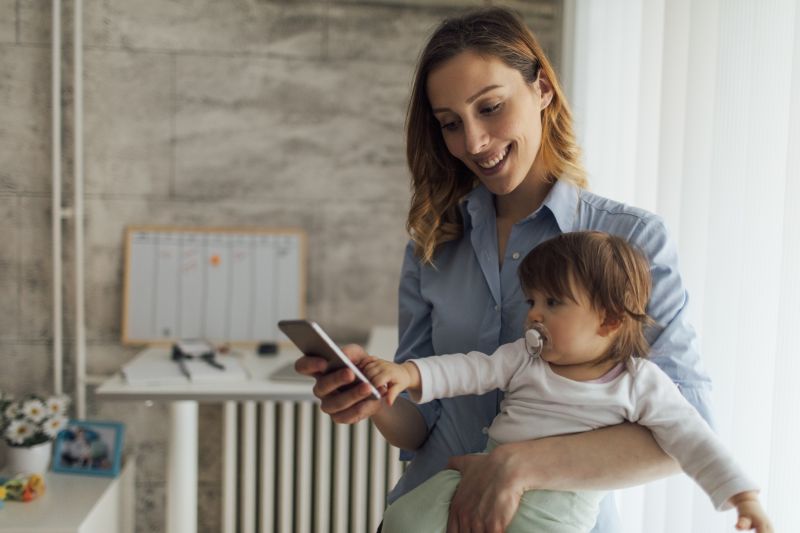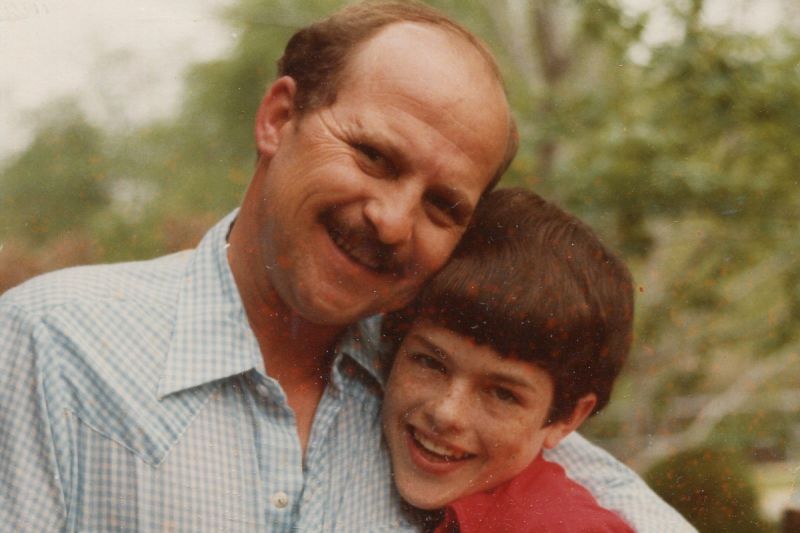Open vs. Closed Adoption: What is the Difference?
What All Adoptive Families Need to Know

As you embark on your family-building journey, you may hear terms like “open” adoption vs. “closed” adoption, and wonder what they mean.
Or call 1-800-ADOPTION.
Keep reading to find out the differences between open vs. closed adoption here:
What is the Difference Between Closed and Open Adoption?
The difference between open and closed adoption comes down to one thing: the type of relationship shared by the birth and adoptive family. To understand how these relationships differ, take a look at these open and closed adoption definitions:
Open Adoptions
An open adoption typically means that the birth parents and the adoptive family speak prior to and after the child is born. This could include anything from periodic pictures and letters, to monthly phone calls, to weekly emails, to annual visits. No two open adoptions are quite alike, and this relationship can be whatever both parties want it to be.
Because of the benefits of contact with birth parents, American Adoptions has its own open adoption standards, which sets minimum contact expectations that adoptive families should be open to when joining our agency. You can call 1-800-ADOPTIONS to talk to an adoption professional about your open adoption questions.
In some cases, adoptive and birth parents choose to go beyond these base requirements to share other forms of contact, like text messages, video calls and more.
There are also times when prospective birth parents may not request all of the forms of contact the adoptive family is willing to participate in (for example, they may prefer only to receive pictures and letter updates and forego phone and email communication).
Closed Adoptions
When many people think about adoption, they envision a closed adoption, in which the adoptive family and birth mother remain confidential, with no contact prior to or after the placement of the child.
For many generations, it was common practice to keep adoptions closed. However, in the early 1980s, adoption began to shift toward more openness.
Today, because of the lasting stigmas and misconceptions about open adoption, some people still believe closed adoptions to be "safer," mainly out of a fear that if the birth parents know where the adoptive family lives, that they will "take back" the child. This is one of the biggest arguments in the debate for open vs. closed adoption.
While this fear has largely been perpetuated by made-for-television movies and sensationalized media reports, this is not true. Today's adoption laws are very clear — once the adoption is finalized, the adoptive family is recognized as the child's legal family.
Closed vs. Open Adoption: Pros and Cons
Both types of adoption, open and closed, can have some benefits and challenges. Here are some of the most notable pros and cons to know when you’re wondering, “What is the difference between an open and closed adoption?”
Open Adoption
Today, the vast majority of adoptions are considered open. In fact, according to open vs. closed adoption statistics, it’s estimated that only 5% of modern adoptions are closed.
Research has shown that maintaining an open relationship with your child’s birth family can be one of the best experiences in an adoption — not only for the birth family, but also for you and, most importantly, your child. Here are just a few of the benefits of having an open adoption versus a closed adoption:
These are just a few of the many benefits of open adoption. That’s not to say there can’t be challenges; every relationship can have its ups and downs. There may be times where you and your child’s birth family struggle to establish healthy boundaries, and there may be some miscommunications and hurt feelings along the way. In some extremely rare cases, safety may be a concern, and a fully open adoption may not be in a child’s best interests.
However, in most cases, the pros of open adoption outweigh the cons. This is why most adoptions today are open instead of closed — and why American Adoptions asks all adoptive families to be open to a certain level of openness in their own post-adoption relationship.
Closed Adoption
Closed adoptions are known for their privacy, which is one of the biggest differences between open and closed adoptions. This can make it seem more appealing to adoptive families and birth parents at first glance. Once the adoption is finalized, that’s it. The adoptive family and the birth parents will never have to see each other again.
Some prospective adoptive parents, especially when they first start the process, fear that open adoption will “confuse” their child or that open adoption is a form of “coparenting” with the birth mother. To them, closed adoption seems like the safer option. However, these fears are unfounded. They’re based in persistent myths about open adoption, and learning more about how this process actually works can help alleviate those concerns.
In reality, closed adoptions tend to do more harm than good in the long run. In most cases, the disadvantages of closed adoption outweigh any potential benefits. Here are a few to consider:
Despite these and other challenges, it is important to remember that it is ultimately up to prospective birth parents to determine whether they want to have an open or closed adoption with their child and the adoptive family in the future.
While it is rare for them to make this choice, some expectant mothers do still choose closed adoption. Everyone deals with the grief and loss of adoption differently, and for some women, it may be easier to move forward after placement in a closed adoption.
In these cases, adoptive parents may find themselves and their child in a closed adoption. If you find yourself in this situation, don’t worry — while it can be more difficult to raise an adopted child without having all of the answers to their questions, there are still things adoptive parents can do to help their child develop a strong sense of identity and be proud of their adoption story.
Most likely, though, you will have some degree of openness in your relationship with your child’s birth family. For all of the reasons above, the vast majority of prospective birth mothers today choose open adoption vs. closed.
Evolving Relationships
Although at first many adoptive families may prefer a more closed or semi-open adoption, once they meet the birth parents and connect with them, they find the relationship evolves into a more open adoption. Over time, they also come to understand that there isn’t just one open or closed adoption definition.
Read our adoptive family testimonials and our open and closed adoption articles for more information on each type of adoption.
If you’d like to learn more about the difference between open and closed adoptions, you can call 1-800-ADOPTION or click here to get help from a professional.
Disclaimer
Information available through these links is the sole property of the companies and organizations listed therein. American Adoptions provides this information as a courtesy and is in no way responsible for its content or accuracy.
